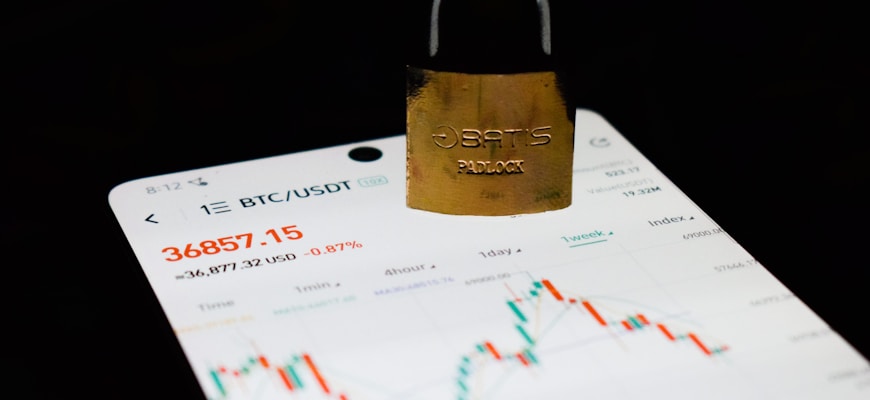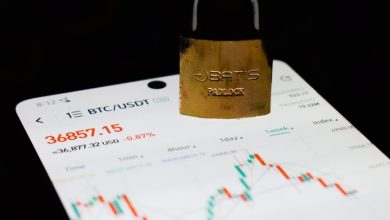The Role of Technical Analysis in Crypto Risk Management

- Understanding the basics of technical analysis
- Analyzing historical price data for better risk management
- Identifying trends and patterns in cryptocurrency markets
- Using technical indicators to make informed trading decisions
- Implementing stop-loss orders based on technical analysis
- The importance of combining technical analysis with fundamental analysis in crypto risk management
Understanding the basics of technical analysis
Technical analysis is a key tool in managing risks in the crypto market. It involves analyzing historical price data to forecast future price movements. By understanding the basics of technical analysis, traders can make informed decisions and minimize potential losses.
One fundamental concept in technical analysis is support and resistance levels. Support is a price level where a cryptocurrency tends to find buyers and stop falling, while resistance is a price level where it tends to find sellers and stop rising. Identifying these levels can help traders determine entry and exit points for their trades.
Another essential aspect of technical analysis is trend analysis. This involves identifying the direction in which a cryptocurrency is moving over time. Traders can use trend lines and moving averages to spot trends and make decisions based on whether to buy or sell a particular asset.
Additionally, technical analysts often use indicators to help them make sense of market data. These indicators can provide valuable insights into market sentiment and potential price movements. Some popular technical indicators include the Relative Strength Index (RSI), Moving Average Convergence Divergence (MACD), and Bollinger Bands.
Overall, understanding the basics of technical analysis is crucial for effective risk management in the crypto market. By utilizing tools such as support and resistance levels, trend analysis, and technical indicators, traders can make more informed decisions and increase their chances of success in this volatile market.
Analyzing historical price data for better risk management
One effective way to improve risk management in the world of cryptocurrency trading is by analyzing historical price data. By studying past price movements and trends, traders can gain valuable insights into potential future price movements. This analysis can help identify patterns and signals that may indicate when to buy or sell a particular cryptocurrency.
Technical analysis involves using various tools and indicators to interpret historical price data. Common tools include moving averages, support and resistance levels, and chart patterns. By applying these tools to historical price data, traders can make more informed decisions about when to enter or exit a trade.
Furthermore, analyzing historical price data can also help traders identify potential risks and take steps to mitigate them. By understanding how a particular cryptocurrency has behaved in the past, traders can anticipate potential price fluctuations and adjust their trading strategies accordingly. This proactive approach can help minimize losses and maximize profits in the long run.
Identifying trends and patterns in cryptocurrency markets
One of the key aspects of crypto risk management is identifying trends and patterns in cryptocurrency markets. By analyzing historical price data, traders can gain valuable insights into potential future price movements. Technical analysis is a popular method used to identify these trends and patterns.
Technical analysis involves studying past market data, primarily price and volume, to predict future price movements. Traders use various tools such as charts, indicators, and statistical analysis to identify trends and patterns that can help them make informed trading decisions. By understanding market psychology and behavior, traders can better anticipate market movements and manage their risk effectively.
By identifying trends and patterns in cryptocurrency markets, traders can make more informed decisions about when to buy or sell assets. This can help them maximize their profits and minimize potential losses. Additionally, by using technical analysis techniques, traders can develop trading strategies that are based on data and evidence rather than emotions or speculation.
Overall, technical analysis plays a crucial role in crypto risk management by providing traders with valuable insights into market trends and patterns. By leveraging historical data and market analysis, traders can make more informed decisions and better manage their risk exposure in the volatile cryptocurrency markets.
Using technical indicators to make informed trading decisions
When it comes to managing risk in the volatile world of cryptocurrency trading, technical indicators play a crucial role in helping traders make informed decisions. These indicators are mathematical calculations based on the price, volume, or open interest of a security. By analyzing these indicators, traders can gain valuable insights into the market trends and patterns, which can help them predict future price movements.
One of the most commonly used technical indicators is the moving average, which helps traders identify the direction of the trend by smoothing out price fluctuations over a specified period. Another popular indicator is the relative strength index (RSI), which measures the speed and change of price movements to determine whether a security is overbought or oversold.
By using a combination of technical indicators, traders can develop a comprehensive trading strategy that takes into account various market signals. For example, if the moving average indicates an uptrend, and the RSI shows that a security is oversold, a trader may decide to buy the asset in anticipation of a price increase.
Implementing stop-loss orders based on technical analysis
Implementing stop-loss orders based on technical analysis is a crucial aspect of effective risk management in the cryptocurrency market. By utilizing technical indicators and chart patterns, traders can set stop-loss orders at key support levels to limit potential losses. These orders are designed to automatically sell an asset if its price reaches a predetermined level, thereby protecting traders from significant downside risk.
When using technical analysis to determine stop-loss levels, it is important to consider factors such as moving averages, trend lines, and key support and resistance levels. By identifying these levels, traders can establish stop-loss orders that align with their risk tolerance and trading strategy. Additionally, it is essential to regularly review and adjust stop-loss orders as market conditions evolve.
By incorporating technical analysis into stop-loss order implementation, traders can make more informed decisions and better manage their risk exposure in the volatile cryptocurrency market. This proactive approach can help traders protect their capital and maximize their potential returns over time.
The importance of combining technical analysis with fundamental analysis in crypto risk management
Combining technical analysis with fundamental analysis is crucial in crypto risk management. While technical analysis focuses on historical price data and market trends, fundamental analysis looks at the underlying factors that drive the value of a cryptocurrency. By using both approaches together, investors can gain a more comprehensive understanding of the market and make more informed decisions.
Technical analysis helps traders identify entry and exit points based on patterns and indicators. It can provide valuable insights into market sentiment and potential price movements. On the other hand, fundamental analysis allows investors to evaluate the long-term viability of a cryptocurrency project, including its technology, team, and adoption potential.
By combining these two methods, investors can better assess the risk associated with their investments and make more strategic decisions. Technical analysis can help identify short-term trading opportunities, while fundamental analysis can provide insights into the long-term growth prospects of a cryptocurrency.
Ultimately, a combination of technical and fundamental analysis can help investors mitigate risk and maximize returns in the volatile crypto market. By understanding both the market trends and the underlying value of a cryptocurrency, investors can make more informed decisions and navigate the market more effectively.



